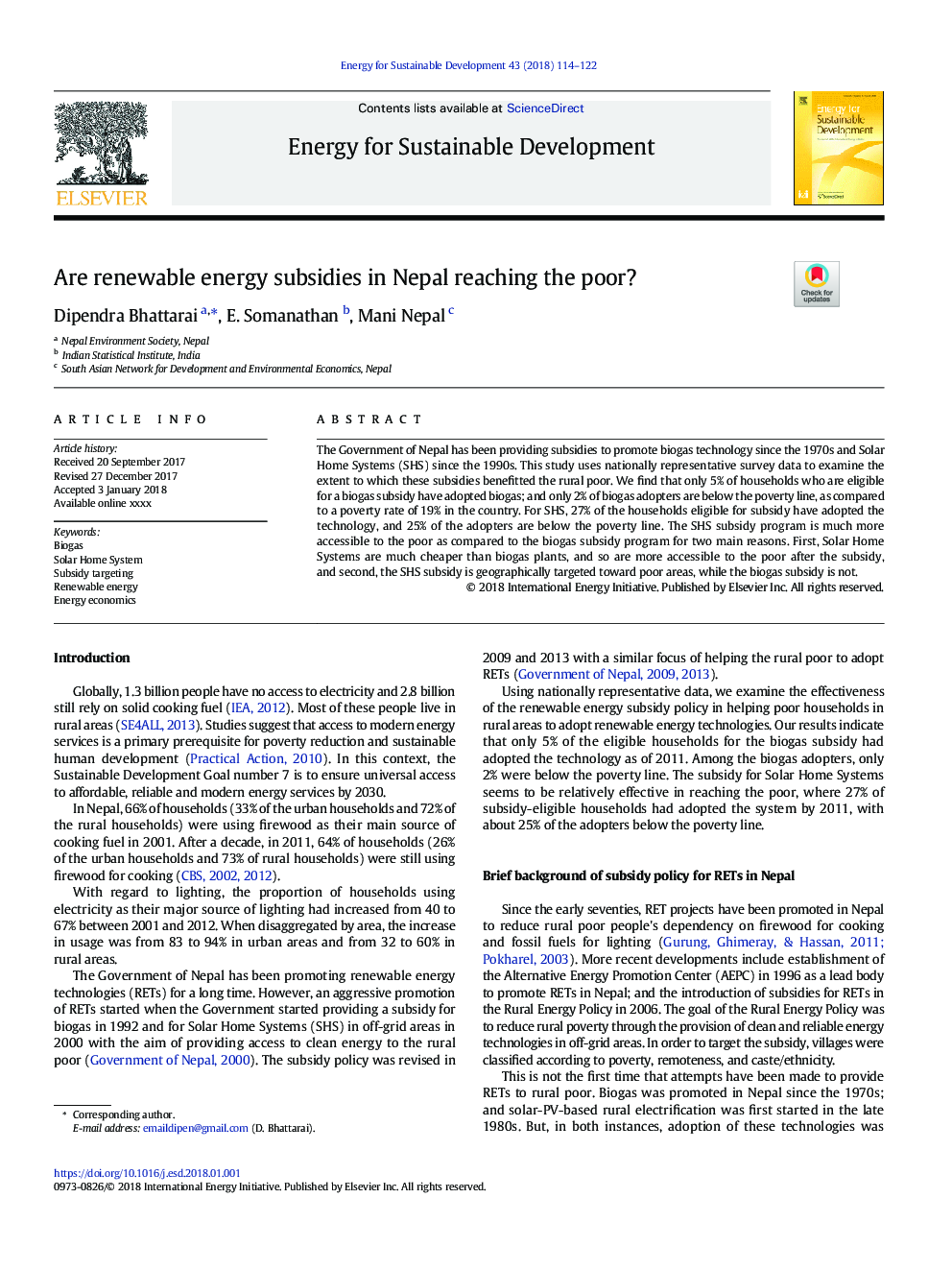| Article ID | Journal | Published Year | Pages | File Type |
|---|---|---|---|---|
| 7453622 | Energy for Sustainable Development | 2018 | 9 Pages |
Abstract
The Government of Nepal has been providing subsidies to promote biogas technology since the 1970s and Solar Home Systems (SHS) since the 1990s. This study uses nationally representative survey data to examine the extent to which these subsidies benefitted the rural poor. We find that only 5% of households who are eligible for a biogas subsidy have adopted biogas; and only 2% of biogas adopters are below the poverty line, as compared to a poverty rate of 19% in the country. For SHS, 27% of the households eligible for subsidy have adopted the technology, and 25% of the adopters are below the poverty line. The SHS subsidy program is much more accessible to the poor as compared to the biogas subsidy program for two main reasons. First, Solar Home Systems are much cheaper than biogas plants, and so are more accessible to the poor after the subsidy, and second, the SHS subsidy is geographically targeted toward poor areas, while the biogas subsidy is not.
Related Topics
Physical Sciences and Engineering
Energy
Energy (General)
Authors
Dipendra Bhattarai, E. Somanathan, Mani Nepal,
